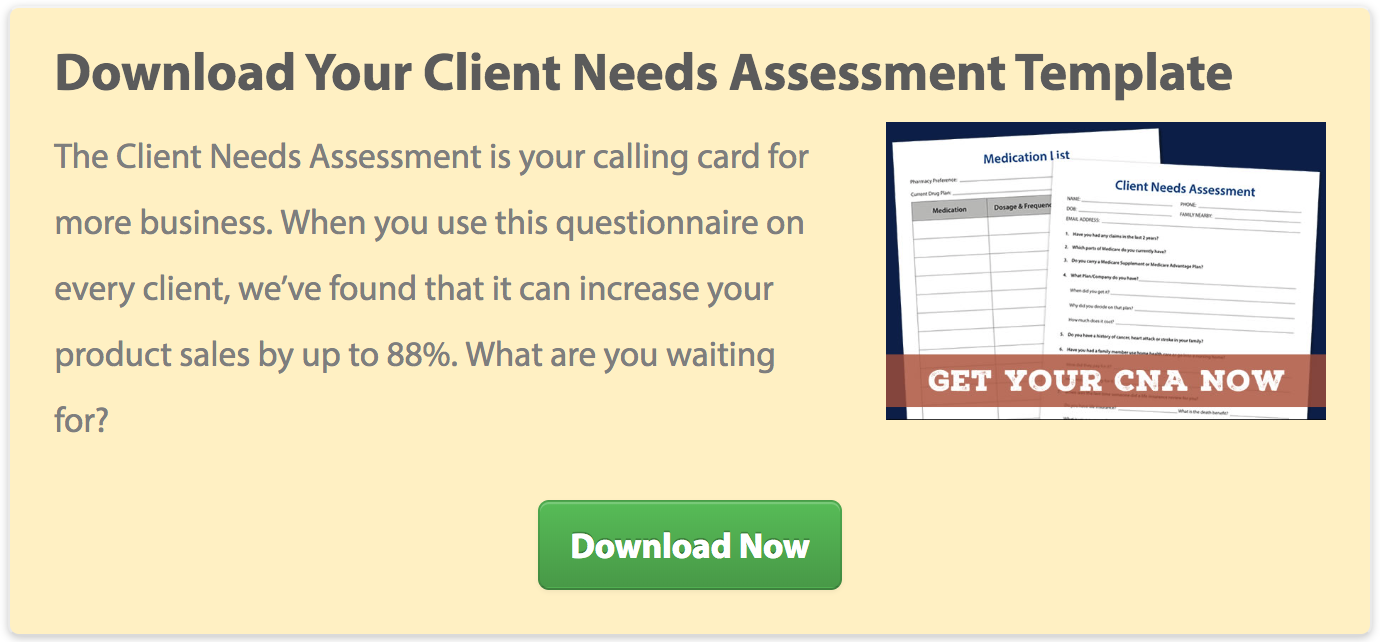Q: I’m a Med Supp agent. Why would I start selling short-term care?
A: If you do a needs assessment with your clients, you’ll be able to show them where the gaps are in their coverage. Often times, when you just sell Med Supps, your clients aren’t aware there are gaps in coverage. They think Medicare will cover them for everything.
When you offer products that fill in those gaps, such as short-term care, you’re better serving the client.
You’ll also see your bottom line reflect the new increase in sales. The commissions on short-term care are really impressive.
Q: Who’s the target consumer for this product?
A: The best client for this product is someone who:
- Got declined for long-term care
- Has long-term care but wants coverage for the elimination period
- Would not pass underwriting for long-term care
- Can’t afford long-term care
- Is too old for long-term care
- Is a single woman
Q: Do you have to be LTC-certified to sell this?
A: No, you do not.
Q: What are the rate increases like?
A: They’re little to none. For example, Aetna and Medico have never had a rate increase on short-term care (and that’s going 20+ years back).
We don’t know the future, of course, but the past is a great indication.
Q: Is it guaranteed renewable?
A: Yes.
Q: If Medicare + a Med Supp cover up to day 100, why would I write a 0-day or 20-day waiting period?
A: The first 20 days of Medicare only work in a skilled nursing facility. A short-term care plan has additional options so that the patient doesn’t necessarily have to go to a nursing home.
Also, Medicare doesn’t pay for recovery care unless the patient meets the following requirements:
- Covered as a hospital inpatient for at least 3 consecutive days
- Ordered by a physician
- Enter approved facility within 30 days after leaving the hospital
- Received skilled care on a daily basis
- You have to be improving
It’s difficult to rely on your client fitting all of these requirements, so having a 0-day or 20-day waiting period ensures he or she will be covered.
It’s better to have the short-term care policy kick in sooner than later, because if Medicare won’t pick up those charges, your client will be paying for everything out of pocket.
Secondly, if the client has a long-term care plan with an elimination period, a short-term care plan can fill in that period by offering the client first-day coverage.
Q: What does short-term care cover? Just the nursing home?
A: It varies by carrier. For example, Medico has built their plan to include everything, while Aetna’s covers nursing facilities and assisted living with a home care rider.
Here’s a chart to break it down by the carriers we are contracted with:
|
Aetna |
Medico |
UNL |
Bankers Fidelity |
Standard Life |
|
|---|---|---|---|---|---|
|
Nursing facility |
✓ |
✓ |
✓ |
✓ |
✓ |
|
Assisted living |
✓ |
✓ |
✓ |
✓ |
|
|
Home health care |
Rider |
✓ |
Rider |
Rider |
|
|
Adult day care |
✓ |
||||
|
Skilled nursing facility |
✓ |
✓ |
✓ |
||
|
Bed reservation benefit |
✓ |
✓ |
✓ |
Q: How do you become eligible for benefits?
A: In general, you are eligible for benefits if you cannot perform 2 or more of the ADLs or you have a cognitive impairment.
Bankers Fidelity also provides benefits if you require medically necessary care due to a covered injury or covered sickness.
Finally, Standard Life also covers you if you require care due to a medical necessity.
Q: How do I sell this policy to someone who thinks they’ll never need it?
A: The best way to create the need for this policy is to offer up realistic examples of when you could go on claim.
For example, if you break both of your wrists, you would qualify as you can’t perform 2 or more of the ADLs.
If you fall on ice during the winter and break your hip, the same thing applies.
If you’re a big guy and you break your leg, your wife probably won’t be able to take care of you. A recovery care plan can pick up the cost of care.
The hospital isn’t going to keep you for the length of time you’ll need to recover, and that’s when a recovery care plan kicks in.
Many clients think they have to be delirious and frail to ever go on claim — and they don’t see themselves getting to that point. However, the reality is that’s not always the case.
Q: Is the underwriting like long-term care?
A: No, the underwriting is very comparable to a Medicare Supplement. In most cases, if the client is approved for a Med Supp, they’ll be approved for a recovery care plan.
Q: What’s the average age that people buy a recovery care plan?
A: The average age is between 67-73.
Q: What’s the likelihood that my client will be approved?
A: The industry average is in the 90-98% range.
Q: In which states is short-term care not available?
A: California, Minnesota, New York, Vermont, New Hampshire, Massachusetts, and parts of Florida.
Q: What’s the average premium?
A: The average annual premium, based on sales data collected from 2013-2015, is $1,000.
Q: Are there any underwriting tips?
A: We have charts of what certain carriers will accept that could be trouble spots.
For example, Aetna doesn’t have a weight chart, so if you have an overweight client that can’t get approved for long-term care or another short-term cary policy, you could place them with Aetna.
Those charts are in our Short-Term Care Quick Training Guide.
Q: If a client goes on claim and only uses 5 days of their policy before they recover and go back home, are their benefits gone?
A: No. A client can go on claim, go off claim, and go back on claim again until the full length of the benefit period is used up.
Q: Is this an indemnity or reimbursement policy?
A: It varies by carrier. Just to make sure we’re all on the same page, a reimbursement policy pays benefits based on the actual expenses. So, if you purchase $200/day of benefits, but your nursing home is only $180, the policy will only pay for $180. You do not get to keep the remaining $20.
An indemnity policy would pay out the full amount, regardless of how much the actual bill is.
Here’s a chart showing each carrier based upon the information in the Outline of Coverage:
|
Indemnity |
Reimbursement |
|
|---|---|---|
|
Aetna |
X |
|
|
Medico |
X |
|
|
UNL |
X |
|
|
Banker’s Fidelity |
X |
|
|
Standard Life |
X |
Q: How do I bring short-term care up to my clients?
A: Try asking a question that gets the client talking. Here are some examples given by Dave Peters and Steve Patton from the STC conference:
- Who would take care of you if you were unable to do daily activities?
- Are you concerned about the out-of-pocket costs that come from an illness or an accident?
- Do you know anyone that’s ever needed care? Maybe not a facility, but at home?








